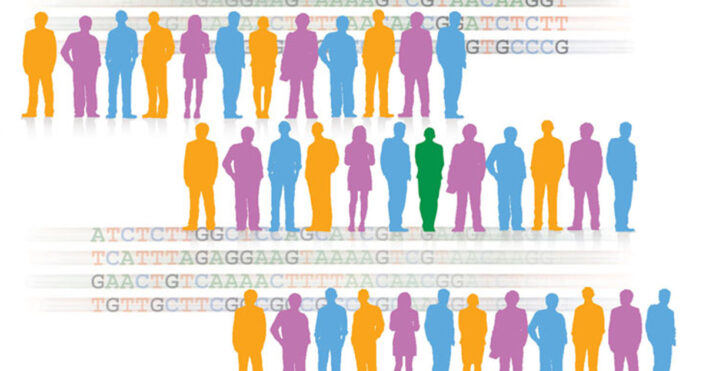Walkthrough Of The LifeDNA Wellness Report: Part I
harvey
on
August 16, 2024
Genetics And Wellness
Genetics significantly influences physical wellness, as it dictates susceptibility to conditions such as heart disease, diabetes, obesity, and certain cancers. We can trace back to genetic predispositions, the way our bodies metabolize food, respond to exercise, manage cholesterol levels, and regulate blood pressure. The foundational genetic blueprint is crucial in how individuals approach their diet and physical activity for optimal well-being.
Mental wellness is another aspect profoundly impacted by genetics. The risk for mental health disorders, including depression, anxiety, bipolar disorder, and schizophrenia, can be inherited. These conditions result from the complex interplay between multiple genes and environmental factors, affecting an individual’s mental well-being and resilience to psychological stress.
Longevity and the aging process are also under genetic influence. Some gene variants are linked to longer life expectancies and a lower incidence of age-related diseases, suggesting that genetics plays a part in determining how long and how well we live.
Nutritional needs vary from person to person, partly due to genetic differences. These variations can influence how the body processes and absorbs vitamins, minerals, and other nutrients. This can lead to specific dietary requirements, susceptibilities to deficiencies, or intolerances such as lactose intolerance or celiac disease.
Sleep patterns, such as preferences for being a morning or evening person (chronotype) and the risk for sleep disorders like insomnia or sleep apnea, also have a genetic basis. Various genetic factors contribute to the diversity in sleep habits and quality among individuals.
The risk of addiction and substance use disorders, including those related to alcohol and nicotine, is influenced by genetics. We can see this impact in the metabolization of substances and how the brain reward system responds, affecting an individual’s susceptibility to addiction.
Athletic performance is another area where genetics holds sway. Genetic factors can affect muscle composition, cardiovascular fitness, and how the body responds to physical training, influencing an individual’s natural athletic abilities and how quickly they recover from exercise.
Stress response varies widely among individuals, with genetics playing a vital role in determining physiological reactions to stress and the ability to cope with psychological stressors. Genetic variation affects how individuals manage stress and maintain mental health.
Finally, reproductive health, including aspects such as fertility, risk of miscarriage, and the timing of menopause, is influenced by genetics. This highlights the role of genetics in individual health and wellness and the broader context of family planning and reproductive choices.

LifeDNA Wellness Report
Smoking Behavior & Nicotine Dependence
Smoking behavior refers to the act of inhaling and exhaling the smoke from cigarettes or other tobacco products. Nicotine dependence is a condition marked by an addiction to nicotine, a chemical in tobacco, causing individuals to continue smoking despite the known health risks.
The CYP2A6 gene plays a crucial role in the metabolism of nicotine. Genetic variations, such as the rs4105144 polymorphism in the CYP2A6 gene, can lead to differences in how individuals process nicotine. The rate of nicotine metabolism can influence the likelihood of developing nicotine dependence, the number of cigarettes smoked per day, and also how easy or difficult it is to quit smoking.
Understand how genetics impacts smoking behavior in more detail.
Alcohol Consumption
Alcohol consumption involves drinking beverages containing alcohol (ethanol). It ranges from occasional drinking to heavy and binge drinking, with varied effects on health and behavior.
We can attribute individual differences in alcohol metabolism rates to genetic variations in the enzymes responsible for alcohol breakdown, specifically the alcohol dehydrogenases. Individuals with certain genetic predispositions may break down alcohol more slowly, leading to prolonged exposure to alcohol in the body. This extended exposure can elevate the risk of developing Alcohol Use Disorder (AUD).
Understand in-depth the genetics of alcohol metabolism.
Insomnia
Insomnia is a sleep disorder characterized by difficulty falling asleep, staying asleep, or experiencing restful sleep, leading to daytime fatigue and other symptoms.
The serotonin transporter gene polymorphism, 5-HTTLPR, is frequently studied in psychiatric genetics, including its relationship with insomnia. 5-HTTLPR represents genetic variants in the serotonin transporter gene, SLC6A4, also known as SERT. SLC6A4 is responsible for the reuptake of serotonin, a neurotransmitter playing a significant role in mood regulation, among other functions. The 5-HTTLPR variants affect how efficiently serotonin recycles back into nerve cells after release. They can influence an individual’s susceptibility to mood disorders like depression and anxiety.
Insomnia has several other genetic associations. Read about it in our article- Is Insomnia Genetic?
Appendicitis
Appendicitis is the inflammation of the appendix, a small pouch attached to the large intestine, causing severe abdominal pain and requiring prompt medical treatment, often surgery.
A LifDNA article is coming soon!
Resting Heart Rate
The resting heart rate represents the number of heartbeats per minute while at rest. It is an important indicator of cardiovascular health, with lower rates generally indicating better cardiovascular fitness.
In a 2010 GWAS, researchers found a significant association with the SNP rs9398652 of the GJA1 gene. This variant is linked to a 12.6 ms shorter RR interval per the minor A allele, equating to a heart rate increase of 0.95 beats per minute. Another SNP, rs11154022, located just 8 kb from GJA1, also showed a significant genome-wide association but in the opposite direction, extending the RR interval and lowering heart rate. These SNPs have a low correlation with each other, suggesting independent genetic influences on heart rate.
Read the complete analysis of the genetics of resting heart rate in our article.
Inguinal Hernia
An inguinal hernia occurs when tissue, such as part of the intestine, protrudes through a weak spot in the abdominal muscles near the groin area, often causing pain and swelling.
Variations in the EFEMP1 gene, especially the SNP rs2009262, can affect the structure and function of extracellular matrix proteins. Such alterations in the extracellular matrix can weaken connective tissues, potentially aggravating conditions like hernias by reducing tissues trength and integrity.
Read in more detail: Your Genetic Predisposition to Inguinal Hernia
Motion Sickness
Motion sickness happens when the brain receives conflicting signals from the eyes, inner ears, and other body parts during movement, leading to dizziness, nausea, and vomiting.
Researchers found notable genetic associations with motion sickness in a GWAS involving over 80,000 participants. One such association was rs66800491, located near PVRL3, a gene implicated in eye development. Another genetic marker was SNP rs2153535 near MUTED, which plays a role in balance regulation. Many of the discovered SNPs are near genes involved in neurological functions, such as NLGN1 and CBLN4.
Read in more detail: Unlocking the Genetic Code of Motion Sickness
Inflammatory Response
The inflammatory response is the body’s defense mechanism against infection and injury, involving increased blood flow, white blood cell activation, and release of chemicals to fight off pathogens and to repair tissue.
Genetic markers associated with the inflammatory response encompass various genes responsible for coding proteins that regulate different facets of the immune system. The presence of variations in genes that encode both pro-inflammatory and anti-inflammatory cytokines is crucial. Polymorphisms in the genes responsible for producing tumor necrosis factor-alpha (TNF-α), interleukin-1 (IL-1), and interleukin-6 (IL-6), for instance, are connected to changes in cytokine levels and a heightened risk of developing inflammatory conditions.
Read in more detail: Genetic Insights into Inflammation
Potential For Cannabis Dependence
Potential for cannabis dependence refers to the likelihood of developing a reliance on cannabis. It can affect your ability to stop or control cannabis use despite negative consequences.
Multiple genes are recognized as likely factors in the development of cannabis dependence. Specifically, genetic differences within the endocannabinoid system, notably in the cannabinoid receptor 1 (CNR1) gene, are thought to elevate the risk of developing a dependency on cannabis. Such genetic variations may alter the operation of the endocannabinoid system, thereby affecting a person’s reaction to cannabis.
Read our full analysis: Exploring the Genetic Basis of Cannabis Dependency & Mental Well-Being
Diet & DNA Damage
DNA damage refers to changes to the DNA structure that can lead to mutations and disease. A major cause of DNA damage is oxidative stress, which occurs when there’s an imbalance between free radicals and antioxidants in the body. Diets high in processed foods, sugar, and unhealthy fats can increase oxidative stress.
You may also like: A Walkthrough of the LifeDNA Nutrition Report
Several genetic variants have been found to influence DNA damage from diet. Of these, the CYP1A2 SNP rs762551 has been extensively researched. Individuals carrying the A-allele face a higher risk of developing colorectal cancer (CRC) when their diet includes red meat. Similarly, possessing the A-allele in the AHR SNP rs2066853 has also been linked to an elevated risk of CRC.
Read in more detail: The Role of Your Diet in Genetic Damage
Menstrual Cycle Length
Menstrual cycle length is measured from the first day of one menstrual period to the first day of the next, typically ranging from 21 to 35 days in adults.
Research indicates that various genetic factors are involved in determining the characteristics of a woman’s menstrual cycle, including its length, regularity, and the onset of menopause. For instance, variations in genes related to the estrogen receptor, gonadotropin-releasing hormone, and those involved in the hypothalamic-pituitary-gonadal axis can affect how the body regulates the menstrual cycle.
A LifeDNA article coming soon!
Excessive Sweating
Excessive sweating, or hyperhidrosis, involves abnormal, profuse sweating unrelated to heat or exercise and can negatively affect social, professional, and daily activities.
Research has identified genetic markers associated with excessive sweating, highlighting specific variations on chromosomes 2 and 16. The most notable findings were in the chromosome 16 region, where several SNPs, including the well-documented ABCC11 missense variant (rs178229310), were linked to this condition. The ABCC11 protein plays a crucial role in transporting small molecules across the apical membranes of apocrine secretory cells. These genetic insights are instrumental for dermatologists exploring the genetic foundations of skin traits, including hyperhidrosis (excessive sweating).
Read in more detail: Genomic Insights into Hyperhidrosis: Understanding the Genetics of Excessive Sweating
Kidney Stone Predisposition
Kidney stone predisposition increases the likelihood of developing kidney stones. Kidney stones are solid masses formed from crystals in the urine. This can cause severe pain and potential urinary tract obstruction.
A LifeDNA article coming soon!
Male Pattern Baldness
Male pattern baldness is a genetic condition resulting in hair loss in a well-defined pattern. It begins with a receding hairline and thinning on the crown, gradually leading to partial or complete baldness.
A primary factor in assessing the risk of male pattern baldness is family background, especially close maternal relatives, such as the maternal grandfather, who have had this condition. This suggests a higher likelihood of inheriting the genetic tendency towards male pattern baldness. The Androgen Receptor (AR) Gene, found on the X chromosome, plays a crucial role in this type of hair loss. Changes in the AR gene can increase the sensitivity of hair follicles to dihydrotestosterone (DHT), a hormone that causes follicles to shrink and produce thinner, shorter hair strands.
Read our full analysis: Genetics of Male Pattern Baldness
Longevity
Longevity refers to the length of an individual’s life and encompasses the pursuit of extending life expectancy while maintaining the quality of life. It can be influenced by genetic, environmental, and lifestyle factors.
Longevity is a complex trait influenced by both genetic and environmental factors. Significant strides have been made in identifying specific genetic markers contributing to an individual’s lifespan. The APOE gene, responsible for transporting fats, plays a key role in this context. Variants such as APOE2 and APOE3 are associated with longer lifespans and decreased risk of Alzheimer’s disease. Conversely, the APOE4 variant is often linked with a reduced lifespan and heightened risk of developing Alzheimer’s.
Read our in-depth analysis: Genetics vs Lifestyle: What Influences Longevity?
Unlock your full LifeDNA Wellness Report
Why LifeDNA?
LifeDNA has emerged as a prominent option for analyzing raw DNA data from 23andMe and many other sources, owing to a combination of unique offerings and a commitment to personalized wellness.
We offer a basic DNA raw data analysis package to kickstart your journey. Users with raw data from 23andMe, AncestryDNA, etc., can access nearly 200 traits across interests such as Nutrition, Wellness, Vitamins and Supplements, Personality, Fitness, Sleep, Methylation, and Skincare.
Further, if you do not have raw DNA data, such as from 23andMe, LifeDNA provides that too. Start your personalized wellness journey with LifeDNA’s state-of-the-art DNA kits here.
Here is why many regard LifeDNA as the best option for making the most of your 23andMe, AncestryDNA, and other raw data:
- Holistic Approach to Wellness: Unlike many other platforms that focus strictly on health-related risks or ancestry, LifeDNA adopts a holistic approach. We analyze genetic data to offer personalized optimizations for nutrition (including a customized grocery list!), skin care, vitamins & supplements, wellness, personality & cognition, and fitness. This range lets users get a complete picture of their wellness needs based on their DNA.
- Product Recommendations: We go beyond just providing insights. We offer specific product recommendations, skincare ingredients, or supplements tailored to an individual’s genetic profile. It makes our service actionable, allowing users to make immediate changes based on their results.
- Data Security: At LifeDNA, we place a high emphasis on protecting user data. Our commitment to privacy ensures that users can trust the platform with their sensitive genetic information.
- User-Friendly Reports: LifeDNA reports are easy to interpret. Our reports are designed to be accessible to the layperson without compromising on the depth of the information.
- Continual Updates: As genetic research evolves, so does LifeDNA’s platform. Users can expect their reports and insights to be updated with the latest scientific findings.
- Dedicated Research and Development: At LifeDNA, we invest in research to continually refine our algorithms, ensuring that the insights provided are based on cutting-edge science.
- Educational Resources: LifeDNA also provides ample resources for users to understand their genetic makeup better. This education-first approach demystifies the complex world of genetics, making it approachable and actionable for everyone.
- Scientific rigor: To create an unmatched commitment to scientific rigor, LifeDNA partners with CLIA-certified, CAP-accredited, and HIPAA-compliant laboratories.
References
- https://www.ncbi.nlm.nih.gov/pmc/articles/PMC3744214/#:~:text=Genetic%20variation%20in%20CYP2A6%20is,%E2%80%B2%2Dhydroxycotinine%20%5B3%5D.
- https://pubmed.ncbi.nlm.nih.gov/31237183/
- https://academic.oup.com/hmg/article/19/19/3885/637708
- https://pubmed.ncbi.nlm.nih.gov/33131351/
- https://journals.plos.org/plosone/article?id=10.1371/journal.pone.0099962
- https://pubmed.ncbi.nlm.nih.gov/19443135/
- https://aacrjournals.org/cebp/article/17/2/320/67124/Meat-Intake-Heterocyclic-Amine-Exposure-and
- https://www.ncbi.nlm.nih.gov/pmc/articles/PMC6858333/
- https://www.nature.com/articles/s41598-018-27145-2
- https://www.nature.com/articles/s41436-021-01207-3
- https://www.ncbi.nlm.nih.gov/pmc/articles/PMC6471373/#:~:text=It%20is%20worth%20noting%20that,a%20’frailty%20gene’%20that%20slightly
*Understanding your genetics can offer valuable insights into your well-being, but it is not deterministic. Your traits can be influenced by the complex interplay involving nature, lifestyle, family history, and others.
Our reports and suggestions do not diagnose or treat any health conditions or provide any medical advice. Consult with a healthcare professional before making any major lifestyle changes or if you have any other concerns about your results.

















